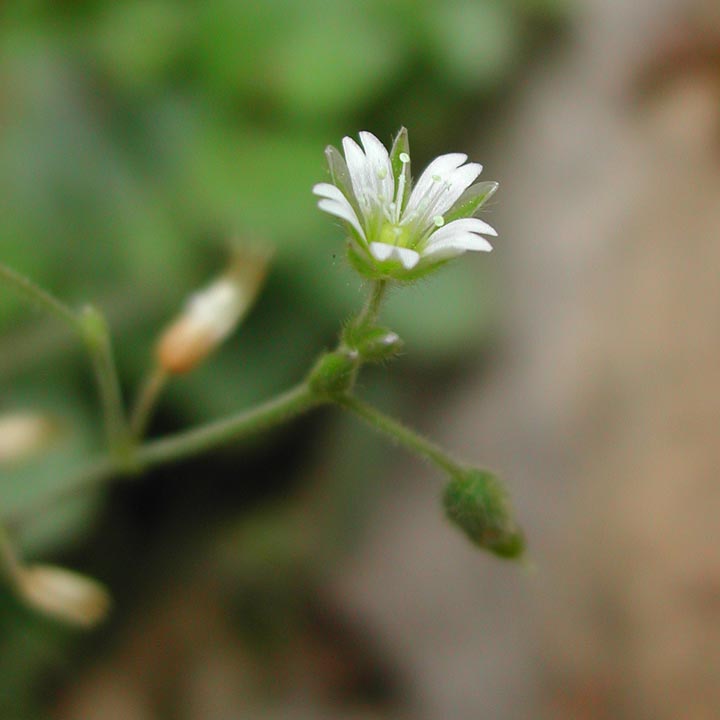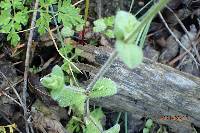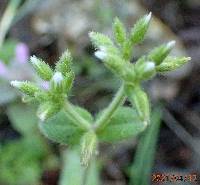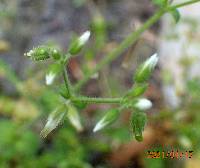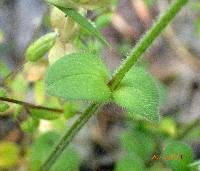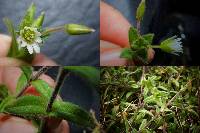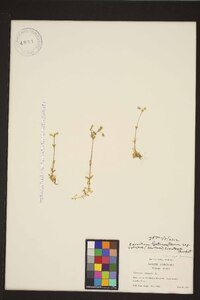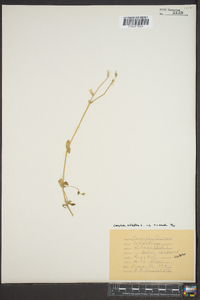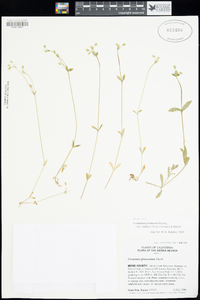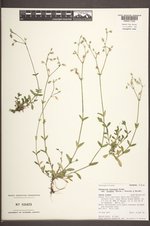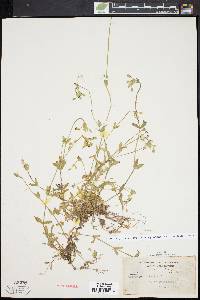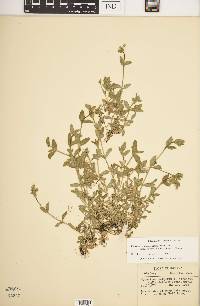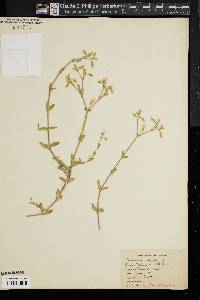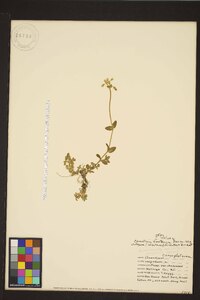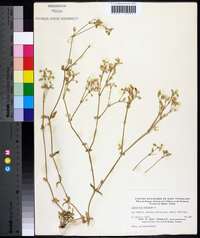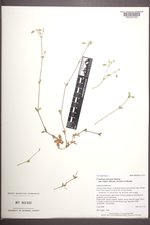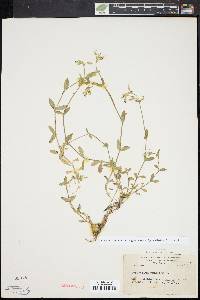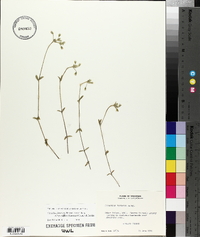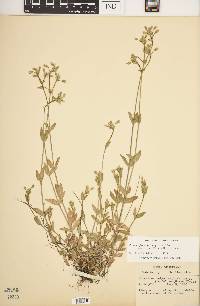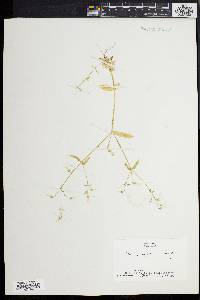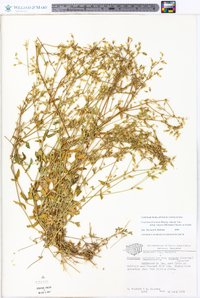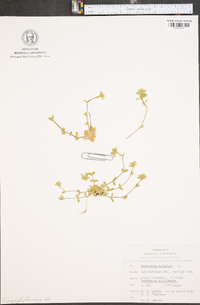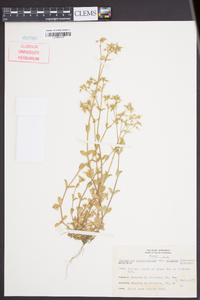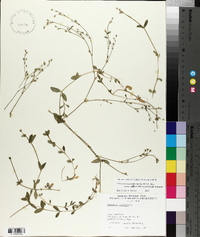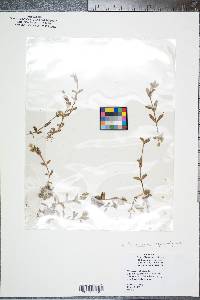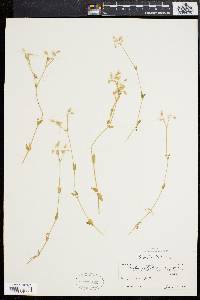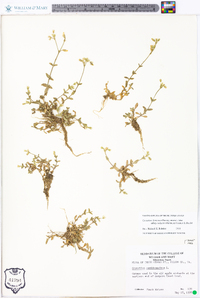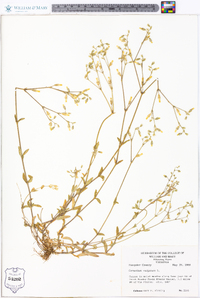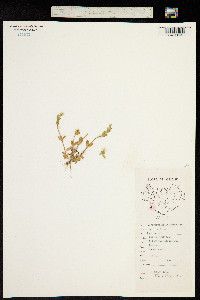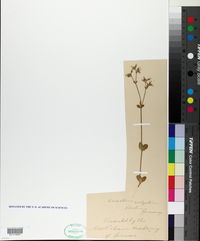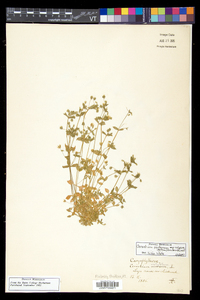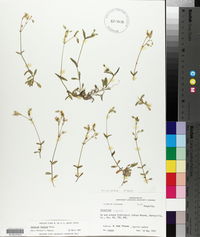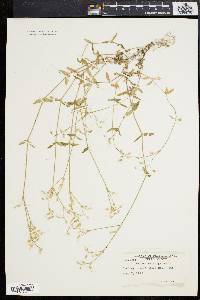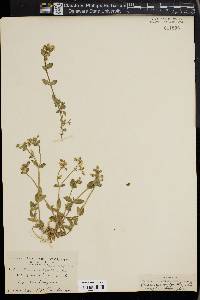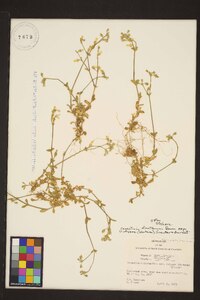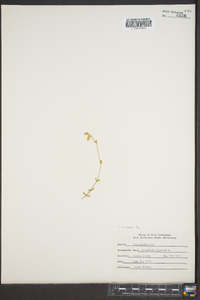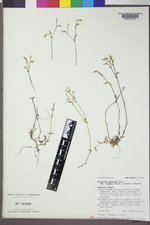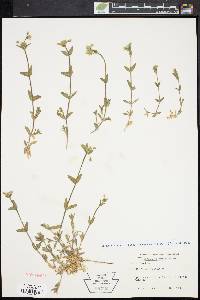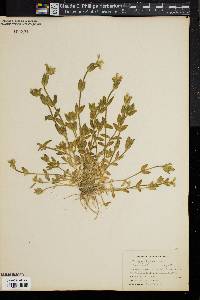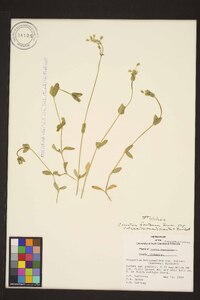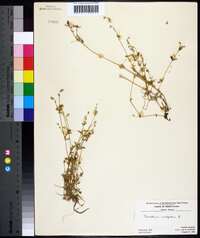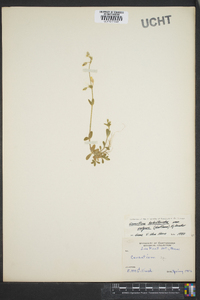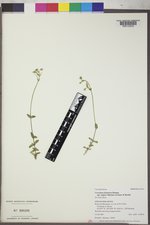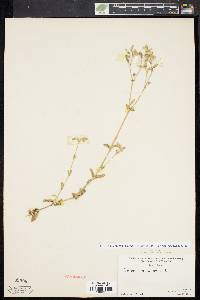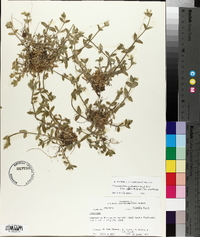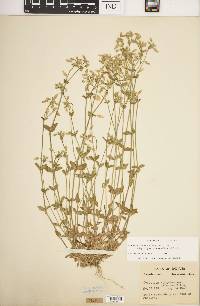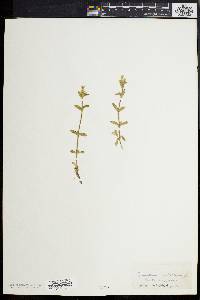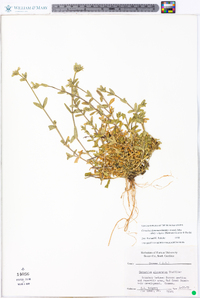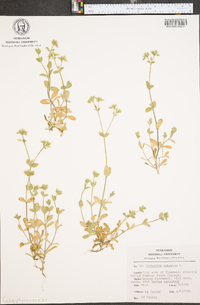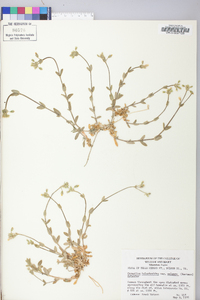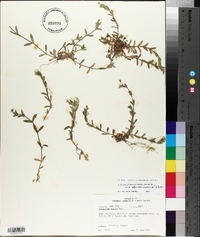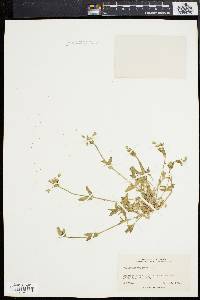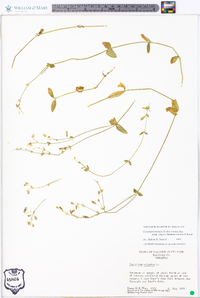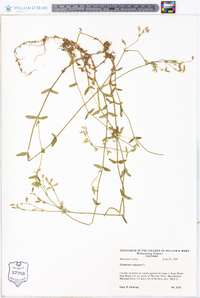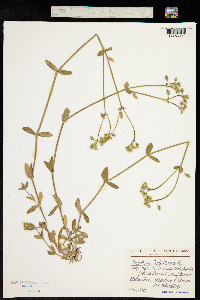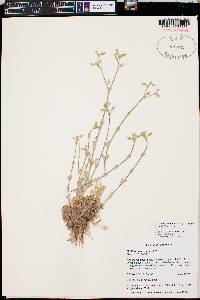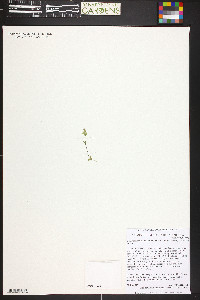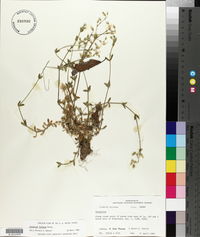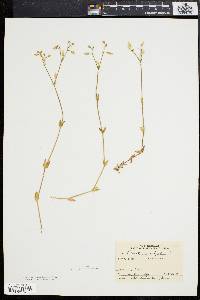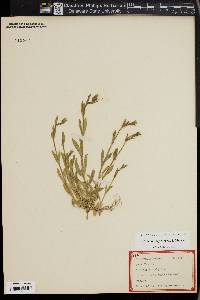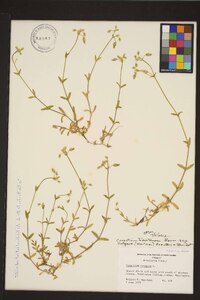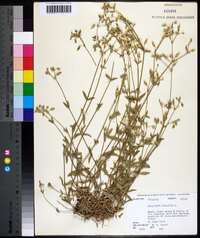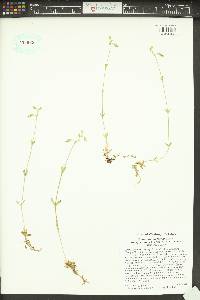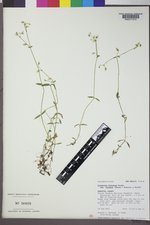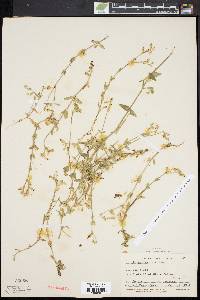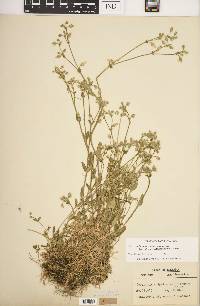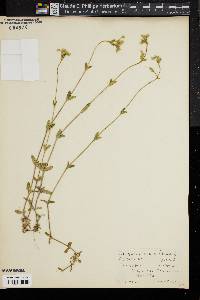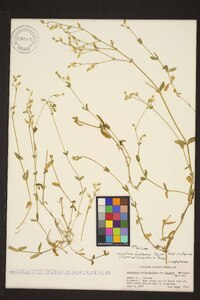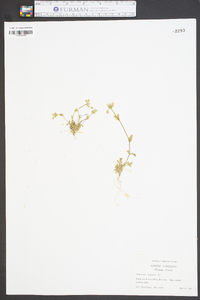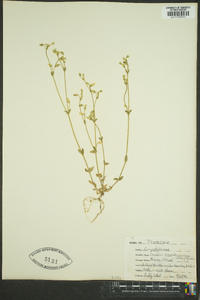Cerastium fontanum subsp. vulgare
|
|
|
|
Family: Caryophyllaceae
Common Mouse-Ear Chickweed, more...big chickweed
[Cerastium adsurgens Greene, moreCerastium fontanum subsp. holosteoides auct. non (Fries) Salman, van Ommering & de Voogd, Cerastium fontanum subsp. triviale (Link) Jalas, Cerastium holosteoides auct. non Fries, Cerastium holosteoides var. vulgare (Hartm.) Hyl., Cerastium triviale Link, Cerastium vulgatum L. 1762, non 1755, Cerastium vulgatum var. hirsutum Fries, Cerastium vulgatum var. holosteoides auct. non (Fries) Wahlenb., Cerastium vulgatum var. vulgatum] |
Plants perennial (very rarely annual). Inflorescences usually eglandular, occasionally viscid and glandular. Petals equaling sepals. Capsules 9-13 mm. Seeds 0.4-0.9 mm; tubercles small. 2n = ca. 122-152, usually 144. Flowering throughout growing season. A common weed in grassy places: lawns, roadsides, pastures, open woodlands, wastelands; 0-3000 m; introduced; Greenland; St. Pierre and Miquelon; Alta., B.C., Man., N.B., Nfld. and Labr., N.W.T., N.S., Ont., P.E.I., Que., Sask., Yukon; Ala., Alaska, Ariz., Ark., Calif., Colo., Conn., Del., D.C., Fla., Ga., Idaho, Ill., Ind., Iowa, Kans., Ky., La., Maine, Md., Mass., Mich., Minn., Miss., Mo., Mont., Nebr., Nev., N.H., N.J., N.Mex., N.Y., N.C., N.Dak., Ohio, Okla., Oreg., Pa., R.I., S.C., S.Dak., Tenn., Tex., Utah, Vt., Va., Wash., W.Va., Wis., Wyo.; Europe; introduced worldwide. Small annual forms of subsp. vulgare can be difficult to separate from Cerastium pumilum. The latter has smaller capsules, narrower and sharply acute sepals, and short, glandular hairs on the sepals, bracts, and inflorescence.
Perennial herb 15 cm - 0.5 m tall Stem: upright from a decumbent base, branched at the base, softly hairy. Non-flowering shoots may be seen growing from the base. These short, branched shoots are often rooting at the nodes. Leaves: opposite, in distant pairs, stalkless, 1 - 2.5 cm long, 3 - 12 mm wide, elliptic to oblong egg-shaped with a blunt or somewhat pointed tip, densely long-hairy. The leaves of the sterile shoots are reverse lance-shaped to spatula-shaped. Inflorescence: a lax, branched cluster (cyme) of three to fifty flowers subtended by hairy, lance-shaped bracts. The upper part of the bracts often have narrow, scarious (dry, thin, and membranous) margins. Flowers: white. Stalk somewhat curved, 2 - 12 mm long, and densely hairy. Stamens ten, sometimes five. Styles five. Sepals: five, distinct, 4.5 - 7 mm long, egg- lance-shaped with a pointed tip, hairy. Petals: five, white, equaling the sepals, reverse lance-shaped, deeply two-lobed, clawed. Fruit: a dehiscent capsule (opening by ten upright, short teeth), 8 - 13 mm long, 2 - 3 mm wide, longer than the sepals, narrowly cylindrical, curved. Seeds numerous, reddish brown, egg- to kidney-shaped, dorsally grooved. Similar species: Having some or all of the bracts with scarious margins (or at least the upper part of the bracts) helps to distinguish this species, Cerastium arvense, C. pumilum, and C. semidecandrum from most other Cerastium in the Chicago Region. Cerastium arvense differs by having petals that are usually more than 10 mm long. The annuals Cerastium pumilum and C. semidecandrum differ by having five stamens and no basal offshoots. Flowering: late March to mid-November Habitat and ecology: Introduced from Eurasia. Common in lawns. Occurence in the Chicago region: non-native Etymology: Cerastium comes from the Greek word keras, meaning horn, referring to the horn-like shape of the seed capsule. Fontanum means "growing in fast-running water, pertaining to springs or fountains." Vulgare means common. Author: The Morton Arboretum FNA 2005 Duration: Perennial Nativity: Non-Native Lifeform: Forb/Herb General: Small herb 10-45 cm, prostrate, lax, or erect, sometimes forming mats, stems wooly to strigose. Leaves: Cauline leaves oblanceolate to lanceolate with acuminate tips, opposite, clasping, basal leaves oval to elliptic, margins entire, all leaves wooly to strigose. Flowers: White with lanceolate green sepals, having 5 spatulate or oblanceolate petals with notched tips, buds glandular and viscid, petals equaling sepals. Feathery, curling, white styles protrude from the superior ovary, ringed by white to yellow stamens and anthers. Fruits: Small horn-shaped capsules 9-13 mm, with tiny seeds < 1 mm. Ecology: Found in grassy and disturbed areas on roadsides, in ditches, fields, lawns and pastures, from 0-10,000 ft (0-3048 m); flowers throughout the growing season. Notes: This common weed is introduced, and the habit tends to vary by the growing site. Look for the ciliate to wooly stem and leaf surface and small white flowers with the notched petals to help with identification of this species. FNA notes that this plant is similar in appearance and difficult to differentiate from Cerastium pumilum, the key differences are that C. pumilum has smaller capsules, narrower and sharply acute sepals, and short, glandular hairs on the sepals and inflorescence. Ethnobotany: A compound infusion of the roots and stems was given to children for worms. Synonyms: Many, see Tropicos Editor: LCrumbacher, 2011 Etymology: Cerastium comes from the Greek keras, "a horn," referring to the shape of the seed capsule, and fontanum means pertaining to springs or fountains, growing in fast-running water, while vulgare means common. Short-lived perennial, perhaps sometimes blooming the first year, viscid- puberulent, 1.5-5 dm, tending to sprawl and root at the nodes, and with short, often matted, basal sterile branches; lvs ovate or lance-ovate, 1-2 cm נ3-12 mm, obtuse or acutish, the lower oblanceolate or spatulate; infl often at first compact, but becoming more open in age, the mature pedicels mostly 5-12 mm; sep 4.5-6 mm, lance- oblong, scarious-margined, without the long distal hairs of C. viscosum; pet about equaling the sep, evidently bifid, commonly to 1 mm or more; fr cylindric, often curved, 8-10 נ2-3 mm; polyploid series based on x=18 (or 9?). Native of Eurasia, now established as a weed over most of N. Amer., often in lawns. Apr.-Oct. (C. fontanum) Gleason, Henry A. & Cronquist, Arthur J. 1991. Manual of vascular plants of northeastern United States and adjacent Canada. lxxv + 910 pp. ©The New York Botanical Garden. All rights reserved. Used by permission. From Flora of Indiana (1940) by Charles C. Deam An infrequent to common chickweed throughout the state. A weed in lawns and found in pastures, fallow fields, open woodland and along roadsides and railroads. Fernald & Wiegand say that the U. S. forms of Cerastium vulgatum L. belong to this variety and its form. |

